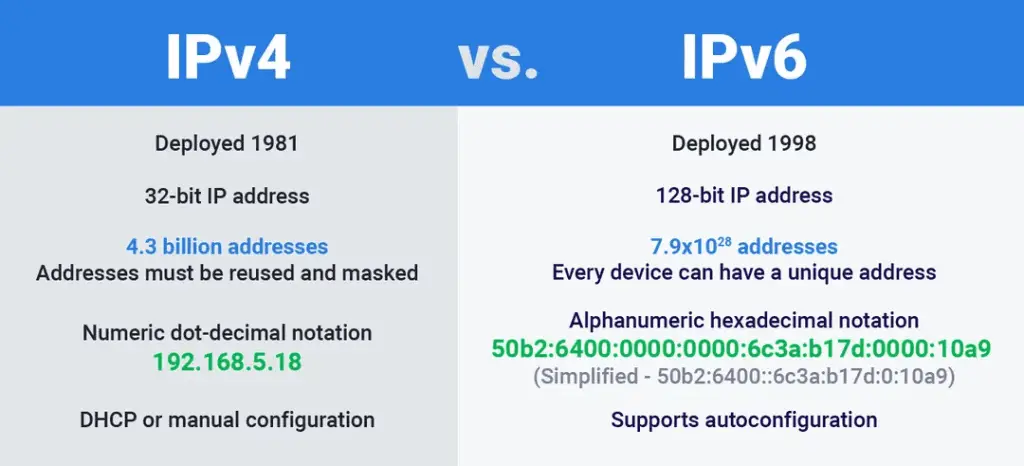IPv6 TL;DR Takeaway:
Curious about IPv6?
Discover what it is, how it works, and why you should consider using it.
Also, learn how to configure it and explore its creation and implementation in 2023.
IPv6, the latest version of the Internet Protocol, is a next-generation standard designed to complement and eventually replace IPv4.
Every device connected to the internet, be it a computer, smartphone, IoT sensor, or smart home component, requires a unique numerical IP address to communicate with other devices.
It uses a 128-bit addressing scheme, offering an astronomical number of unique addresses (approximately 340 sextillions) compared to the limited address space of IPv4.
IPv6 works by assigning a unique IP address to each device connected to the internet.
These IP addresses act as digital identifiers, enabling communication and routing of data packets.
Unlike IPv4, which uses 32-bit addressing, IPv6 utilizes 128-bit addressing, allowing for an almost limitless number of unique IP addresses. This vast address space is essential for accommodating the growing number of internet-connected devices in our modern era.

Using IPv6 offers several compelling advantages.
Firstly, it provides a virtually unlimited supply of unique IP addresses, eliminating the need for complex address translation mechanisms like NAT.
Additionally, it offers native support for mobile devices, allowing seamless roaming and improved connectivity.
The protocol also incorporates enhanced autoconfiguration methods, simplifying network setup.
IPv6’s hierarchical routing structure enhances efficiency, reducing the size of routing tables and improving network performance.
Furthermore, it can be augmented with IPsec, offering robust security measures for data transmission.
Configuring IPv6 depends on the operating system and network infrastructure you are using.
Most modern operating systems and network devices come with built-in support.
To enable or disable IPv6, you can typically navigate to the network settings or network adapter properties.
However, it’s important to note that disabling it may limit your ability to access certain online resources that have transitioned to IPv6.
It is generally recommended to keep it enabled to ensure compatibility and future-proof your network.
IPv6 was introduced by the Internet Engineering Task Force (IETF) in 1998 as a solution to the impending exhaustion of IPv4 addresses.
The transition to IPv6 has been a gradual process, and as of 2023, its functionality deployment continues.
While IPv4 remains more popular due to compatibility and cost considerations, the industry is steadily moving towards the adoption of IPv6.
The coexistence of both protocols allows for a gradual transition and ensures a smooth evolution of the internet infrastructure.
Q: What happened to IPv5?
A: IPv5, also known as the Internet Stream Protocol, was an experimental protocol designed to support connection-oriented communications for voice and video. However, it shared the same limitation as IPv4 with its 32-bit addressing scheme, which led to the development and adoption of IPv6.
Q: Will IPv4 be completely shut down?
A: There is no official date for the shutdown of IPv4. As IPv6 deployment progresses, the world will gradually move away from IPv4. IPv4 addresses can still be reused, sold, and repurposed during the transition to IPv6, ensuring continued internet access for users.
In the era of expanding connectivity, IPv6 emerges as the solution to address the limitations of IPv4.
Its vast address space, improved security features, and enhanced efficiency make it the protocol of the future. While the transition may take time, the industry is steadily adopting this new standard.
By understanding what it is, how it works, and its advantages, you can prepare yourself for the evolving landscape of internet connectivity and ensure a seamless experience in the digital world.
Embrace its power and unlock the full potential of a connected future.